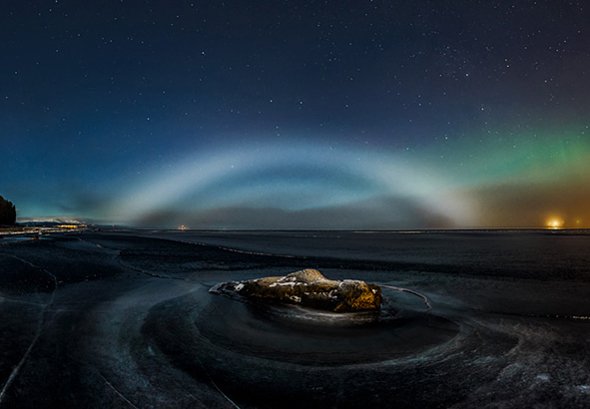Odd and interesting idea for a video, from Yeti Animation: What if the Moon disappeared, and were replaced by other planets in the solar system? What would it look like?
I like the nonchalance with which the passing auto drivers and passengers treat these views. Droll.
This is a visualization of what it might be like if the Moon was replaced with some of the other planets at the same distance as our moon. Planets Rendered in 4K resolution! On Change Quality click on “original” to view in 4k. You need a 4k Monitor to watch. otherwise just watch in 1080p or lower
SATURN!.. The super close moon is Dione, the one slightly further out is Tethys
Both are *tiny* but *very* close
In order show[n]:
Mars
Venus
Neptune
Uranus
Jupiter
Saturn
Mercury is intentionally left off as it isn’t Much bigger than our Moon (and hence is boring)
****************
on Jupiter, you might be able to make out the 4 big moons, They all have orbits larger than our moons orbit. but I stuck them on the far side of jupiter so that they could be seen so it looks as if they are closer (to Jupiter) than they really are.
***************
Video creation method
I created an Earth Moon system in 3dsmax, with accurate sizes and accurate orbital distances.. I than matched video of the real Moon with my video camera, against my model. I also researched the correct FOV of my video camera. I used both methods to verify my Virtual camera’s FOV (around 47 degrees). I next modeled up the rest of the planets in proper scale (Real values) set at the distance of the moon (center to center) (also real values), created the animation of them rotating around, and composited the whole bunch.
***************
Faq:
Scales used in Visualization:
Celestial Body Radius (in km)
Moon: 1738
Mars: 3397
Venus: 6052
Neptune: 25,269 (equatorial) 24,340 (polar)
Uranus: 25,559 (equatorial) 24,973 (polar)
Jupiter: 71,490 (equatorial) 66,854 (polar)
Saturn: 60,268 (equatorial) 54,360 (polar) (not including rings)
Distance to Moon 384,000km
Faq: (faq shrunk from other video for “reasons”)
1, We would not be engulfed by Jupiter or any other planet, Jupiter’s radius is 71,490 km and the distance to the Moon is 384,000km
2, We would suffer from really really horrible tides and earthquakes(and radiation)
3, I *did* model the Ring of debris around Uranus, I actually modeled 8 of them, but you can mostly just make out 3, This was actually the tipping point for me to render this out in 4k resolution
4, I love Pluto, and Mercury. They are left off because they are too small. Pluto is smaller than our Moon, and Mercury is not significantly larger than our Moon.
5, The “Sun” I used for lighting the planets is completely off from reality,
7 Orbiting! Yes! we would be a moon of Saturn, Jupiter, Uranus, and Neptune. They are much more massive than the Earth. Venus is about the same size of the Earth and we would orbit around a center point between us
8 Rotation rates and axial tilts are not accurate to anything
9 Radius of the Sun is 695,500 km, and hence if it were where our Moon is, we would be engulfed by it
10 Scales are Accurate, Every few days someone says my scales are wrong, Or that someone says I’m presenting Saturn as being bigger than Jupiter. I’m going to go through some of the arguments I keep hearing (paraphrasing each)
a. “You’re showing Saturn larger than Jupiter”: I am not, Saturn is clearly smaller than Jupiter in the video, Saturn+ring system *IS* larger than Jupiter (in terms of radius) This is easy to look up.
b. “Jupiter is 300 times larger than Earth! therefore it’s wrong in your video (or 1000 times larger etc)” : There are many sayings about how much larger Jupiter is than earth. 300 is Probably referring to Mass… 1000.. is probably referring to Volume. Without actually specifying the Dimension the argument is pretty moot. I will say this Jupiter’s Radius is about 11 times that of Earths, which fits precisely with my video.
c. “I saw another video where Jupiter Filled the sky!, therefore you’re wrong”: I am very familiar with the video. I even Like the video. However the FOV (field of view) of his Ground does not match the FOV of the planets. In other words, he has a wide angle lens on the ground, and a zoomed lens on the planets. To his own credit he admits this in his own description. In my video My ground FOV and my planet FOV are the same, and hence graphically matched and very reasonably accurate.
d. The confidence I have for my scales being correct is exceptionally high. The dimensions used for the planets and rings has at one point been triple checked along with the earth moon distance. It’s interesting to see how a *few* people have gotten completely worked up over their misconceptions on scale. The size of the Moon is a bit of an illusion, I Think if you still have misconceptions you should hold a dime out to arms length , and hold it against the moon, Or even go out with your own camera,, Zoom out all the way.. and take a photo of the Moon. It really is Tiny against the sky. It’s only about half a degree in angular diameter.
Thanks to everyone for watching, I enjoy making these




 Posted by Ed Darrell
Posted by Ed Darrell 






.jpg)




















